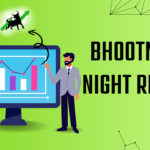Technological landscape, choosing the right tools and platforms can significantly impact the success of your projects. Two notable options that have garnered attention are Corral vs CTAL. Both platforms offer unique features and advantages, but understanding their differences is crucial for making an informed decision. In this comprehensive guide, we’ll explore the key aspects of Corral vs CTAL, compare their functionalities, and help you determine which option is best suited for your needs.
What is Corral?
Corral is a modern software solution designed to facilitate collaboration, project management, and data integration across various teams and platforms. It emphasizes user-friendly interfaces, real-time communication, and robust integration capabilities, making it a popular choice among businesses looking to enhance productivity and streamline workflows.
Key Features of Corral
- Collaboration Tools: Corral offers a suite of collaboration features, including chat functionality, file sharing, and project boards that allow teams to work together seamlessly.
- Integration Capabilities: The platform supports integration with a wide range of third-party applications, enabling users to connect their existing tools and workflows effortlessly.
- Real-Time Updates: Corral provides real-time notifications and updates, ensuring that team members are always informed about project developments.
- User-Friendly Interface: The intuitive design of Corral makes it easy for users to navigate the platform, reducing the learning curve for new team members.
- Customizable Workflows: Users can tailor their workflows to meet specific project requirements, enhancing flexibility and adaptability.
What is CTAL?
CTAL, or Collaborative Task Automation Layer, is a powerful tool designed for automating and managing tasks within collaborative environments. It focuses on enhancing productivity through automation, allowing teams to streamline repetitive processes and improve overall efficiency.
Key Features of CTAL
- Task Automation: CTAL excels in automating routine tasks, freeing up team members to focus on more strategic activities. This feature is particularly beneficial for organizations with high volumes of repetitive tasks.
- Advanced Analytics: The platform offers robust analytics tools, providing insights into team performance and task completion rates, which can help in optimizing workflows.
- Integration with Existing Tools: Similar to Corral, CTAL allows users to integrate with a variety of applications, enhancing its functionality and ensuring it fits into existing workflows.
- Collaboration Features: While focused on automation, CTAL also includes collaboration tools that enable teams to communicate effectively and track project progress.
- Customizable Automation Rules: Users can set specific rules for task automation, ensuring that the platform meets the unique needs of their organization.
Corral vs CTAL: A Comparative Analysis
Now that we have a clear understanding of what Corral vs CTAL are, let’s delve into a comparative analysis of their features, benefits, and use cases.
1. Collaboration Capabilities
- Corral: With a strong emphasis on collaboration, Corral provides various tools that facilitate team communication and project management. Features like chat, file sharing, and project boards enhance teamwork and transparency.
- CTAL: While CTAL also offers collaboration tools, its primary focus is on task automation. Teams can communicate effectively, but the platform’s strength lies in its ability to streamline and automate tasks rather than enhance collaborative efforts.
2. Task Automation
- Corral: Corral includes basic automation features, allowing users to set reminders and automate certain notifications. However, its automation capabilities are not as advanced as those offered by CTAL.
- CTAL: CTAL shines in task automation, providing users with the ability to create complex automation rules for repetitive tasks. This feature can significantly reduce manual work and increase efficiency, making it a strong choice for organizations that rely heavily on automation.
3. User Interface and Experience
- Corral: The user interface of Corral is designed to be intuitive and user-friendly. Its layout facilitates easy navigation, making it accessible for users of all skill levels.
- CTAL: CTAL also offers a user-friendly interface, but it may require a bit more training for users to fully leverage its automation features. The focus on automation can make it slightly more complex compared to Corral.
4. Analytics and Reporting
- Corral: While Corral provides some basic analytics features, they are not as comprehensive as those offered by CTAL. Users can track project progress, but in-depth performance analysis may be limited.
- CTAL: CTAL stands out with its advanced analytics capabilities. Users can gain insights into task performance, team efficiency, and project timelines, enabling data-driven decision-making.
5. Integration Options
- Corral: Corral supports integration with a wide range of third-party applications, allowing teams to connect their existing tools and enhance functionality.
- CTAL: CTAL also offers integration capabilities, ensuring that it can fit seamlessly into an organization’s existing tech stack. This makes both platforms versatile options for teams looking to streamline their workflows.

Choosing the Right Option for Your Needs
Deciding between Corral vs CTAL ultimately depends on your organization’s specific needs and goals. Here are some factors to consider when making your choice:
1. Team Size and Structure
- Corral may be a better fit for smaller teams or organizations that prioritize collaboration and communication. Its user-friendly interface and collaboration tools are designed to foster teamwork.
- CTAL is more suitable for larger organizations with complex workflows that require extensive task automation. If your team spends a lot of time on repetitive tasks, CTAL can help streamline those processes.
2. Focus on Automation
- If automation is a primary concern for your organization, CTAL is the clear winner. Its robust automation features can significantly enhance productivity and efficiency.
- Conversely, if your organization values collaboration and communication as core components of its workflow, Corral may be the more appropriate choice.
3. Budget Considerations
- Cost can be a determining factor when choosing between the two platforms. Evaluate your budget and the pricing structures of each platform to determine which aligns best with your financial resources.
4. Future Growth Plans
- Consider your organization’s future growth and scalability. If you anticipate needing advanced automation and analytics as you grow, investing in CTAL may be a wise decision.
- If your focus is on maintaining strong team dynamics and collaboration as you scale, Corral may better suit your long-term vision.
Real-World Use Cases
Use Case for Corral
Scenario: A small marketing agency with a tight-knit team relies heavily on collaboration to generate creative ideas and deliver projects on time. They utilize Corral for its communication tools, project boards, and file-sharing capabilities. The team finds the platform intuitive and easy to use, facilitating seamless collaboration and allowing them to stay organized.
Use Case for CTAL
Scenario: A large logistics company faces challenges managing numerous repetitive tasks associated with inventory tracking and shipment scheduling. By implementing CTAL, they automate these processes, significantly reducing manual labor and errors. The analytics tools provide insights that help the team optimize operations, leading to increased efficiency and better decision-making.
Conclusion
When it comes to choosing between Corral vs CTAL, both platforms offer unique strengths and capabilities tailored to different organizational needs. Corral excels in fostering collaboration and providing a user-friendly experience, while CTAL stands out with its advanced automation features and analytics capabilities.
By evaluating your team’s size, focus on automation, budget, and future growth plans, you can make an informed decision that aligns with your organization’s goals. Whether you choose Corral vs CTAL, both options have the potential to enhance productivity and streamline workflows, ultimately driving your projects to success.
As you embark on this decision-making journey, consider reaching out to users or experts who can share their experiences with each platform, providing you with valuable insights that may aid in your final choice.
FAQs About Corral vs CTAL
1. What is Corral?
Corral is a collaborative software platform designed to enhance team communication, project management, and data integration. It offers tools for real-time collaboration, file sharing, and customizable workflows.
2. What is CTAL?
CTAL (Collaborative Task Automation Layer) is a task automation tool that focuses on streamlining and managing repetitive tasks within collaborative environments. It includes automation features, advanced analytics, and integration capabilities.
3. What are the main differences between Corral vs CTAL?
The key differences lie in their focus: Corral emphasizes collaboration and communication, while CTAL is geared toward task automation and efficiency. Corral provides more user-friendly collaboration tools, whereas CTAL offers advanced automation capabilities and analytics.
4. Which platform is better for small teams?
Corral may be more suitable for small teams that prioritize collaboration, as its user-friendly interface and communication tools foster teamwork and organization.
5. Is CTAL suitable for large organizations?
Yes, CTAL is ideal for larger organizations with complex workflows that require extensive task automation. Its automation features can significantly reduce manual processes and increase efficiency.
6. How do both platforms handle integration with other tools?
Both Corral vs CTAL support integration with a variety of third-party applications, allowing users to connect their existing tools and workflows seamlessly.
7. Can Corral automate tasks?
While Corral includes basic automation features, its primary strength lies in collaboration. For more advanced task automation, CTAL is the better choice.














